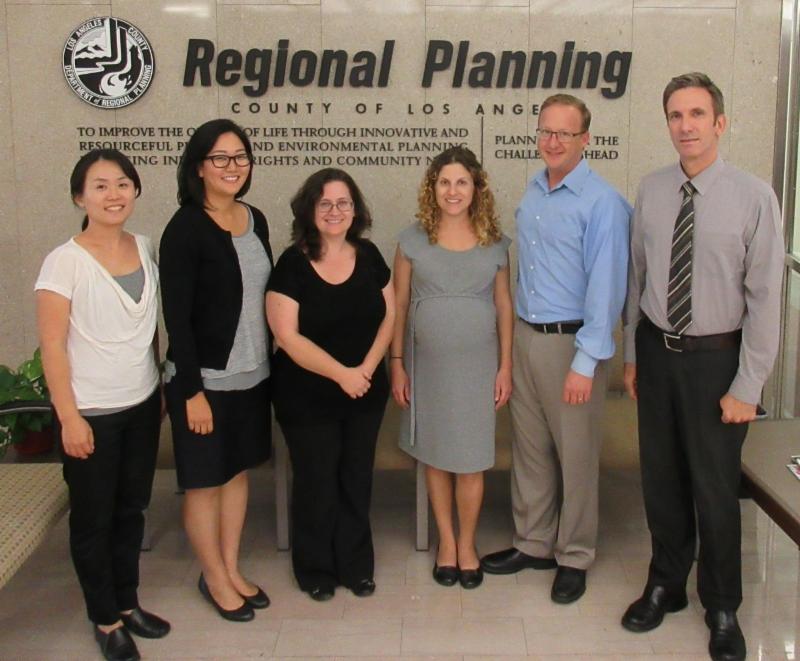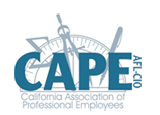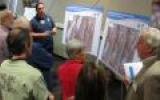Los Angeles County Regional Planners Nearing Completion of 2035 County General Plan Update
 |
| Pictured left to right Soyeon Choi (General Plan Development/Housing), Connie Chung (General Plan Development/Housing), Alyson Stewart (Ordinance Studies), Ayala Scott (General Plan Development/Housing), Leon Freeman (General Plan Development/Housing), Mark Child (Deputy Director, Advance Planning Division). |
Los Angeles County Department of Regional Planning employees - represented by CAPE - will soon complete a 20-year effort to update the County's General Plan, controlling future land use for thousands of square miles.
The General Plan is a foundational document that sets a long range vision for the unincorporated areas of Los Angeles County. The plan establishes where and how the County's unincorporated communities will be shaped in the coming decades, setting goals and policies to promote the public interest. On Tuesday, October 6, 2015, The Los Angeles County Board of Supervisors voted unanimously to adopt the General Plan update.
The unincorporated areas of Los Angeles County have a population of 1 million people, and make up 2,600 square miles of urban, suburban, island, desert, and forest terrain. To organize this vast area of land, Regional Planners at the Department of Regional Planning split up the area into eleven different zones to improve and quicken services endowed to them. Each zone was given specific goals and policies, the elements of which include: Land use, housing, mobility (transportation), conservation and natural resources, air quality, noise, safety, parks and recreation, public services and facilities, economic development, and community planning to reduce emissions.
Supervising Regional Planner Connie Chung, also a CAPE member, has worked on the General Plan update for the past six years and heads the General Plan Development and Housing Section. Her team, and so many others, helped write and design the General Plan update, as well as organized the different county agencies to partner on the massive project. They also met with community stakeholders to explore the needs of residents, and conducted public outreach and name designation.
The General Plan will shape communities to align new housing with jobs, services, and transit. It rezones 4,300 parcels of land and updates land-use policy that reflects the County's projected development and growth. It sets guidelines for new hillside management policies that promote a more sustainable design for hillside developments. The plan also establishes Employment Protection Districts which safe-guards viable industrial land from conversion into residential or commercial uses.
The General Plan also reflects a commitment to environmental sustainability. It expands the County's Significant Ecological Areas, where development regulations promote the balanced management of California's natural habitat.
Implementing a project of this magnitude brought together many CAPE members at different County departments. The LA County Department of Public Works, Parks and Recreation, and Public Health were all involved in the plan. The Department of Public Works agreed to do a Capital Improvement plan for all 11 zones, bringing projects and jobs into each community. The General Plan was truly a collaborative effort across county departments.
Because of the length and scale of this ongoing project, many CAPE-represented Planners deserve recognition for their efforts. Over the years, 6 people have headed the General Plan Development. These include George Malone, Lee Stark, Russ Fricano, Mark Herwick, Paul McCarthy, and Connie Chung. Their combined efforts over nearly two decades has set up Los Angeles County's unincorporated areas with a comprehensive plan that supports community needs, protects the environment, and bolsters its economy.
[CAPE Members: Please share this website with non-members at your work location]
©CAPE [Terms of Use]














